Submitted:
15 July 2024
Posted:
17 July 2024
You are already at the latest version
Abstract
Keywords:
1. Introduction
1.1. State of the Art
- Machine learning (ML) is a subfield of artificial intelligence (AI) that is dedicated to developing algorithms capable of "learning" statistical patterns in data, with the ultimate goal of predicting previously unobserved data [8].
- Computer vision (CV) allows machines to process and interpret data visually. It allows you to address the problems of artificial vision systems since it provides the ability to understand and interpret data. The relevant topics related to this concept are object detection, image classification, and segmentation [9].
1.2. Related Work
1.3. Main Contributions
- We propose the use of a dataset made up of a total of 647 dental panoramic X-rays that were labeled by expert dentists using Winter’s classification criterion. This criterion considers the position of the third molar from the longitudinal axis of the second molar. Based on Winter’s criterion, we were able to characterize the vertical, distoangular, horizontal, and mesioangular angles of the third molars.
- We train, validate, and test DL-based object detection algorithms based on the You Only Look Once V2 (or YOLO V2), Faster Region-Convolutional Neural Network (Faster R-CNN), and Single Shot Multi-box detector (SSD). We compare the performance of each object detection model by using ResNet-18, ResNet-50, and ResNet-101 for the feature extraction stage of each detector.
- We present our results by using precision-recall curves in the proposed dataset. In addition, we evaluated bias, variance, overfitting, and underfitting for each model trained based on YOLO V2, Faster R-CNN, and SSD for the proposed dataset along with detection results and comparison tables of detection percentages.
1.4. Outline
2. Materials and Methods
2.1. Data Acquisition
2.2. Third Molar’s Angle Detection Using CNN-Based Object Detection
2.2.1. Object Detection Methods
Faster-RCNN
YOLO V2
SSD
2.2.2. Feature Extraction Methods
ResNet-18
ResNet-50
ResNet-101
3. Results
3.1. Results for Third Molar Angle Detection with ResNet-18
- It can be observed in Table 3 that a few Faster R-CNN, YOLO v2, and SSD models based on ResNet-18 as feature extractor reaches a very low accuracy result. For Faster R-CNN, the test with the lowest results is Test 3 (training: 1.8%, validation: 1.2%, and testing: 1.1%). YOLO V2 also presents low accuracy results in Test 6 (training: 7%, validation: 12%, and testing: 5%). Finally, SSD also presents low results in Test 15 (training: 2.9%, validation: 2%, and testing: 2%). This suggests that such models have an underfitting problem, which means that the models can’t fit the proposed dental panoramic X-rays dataset distribution. Moreover, a high error in the training set indicates that the models do not fit well with the dental panoramic X-rays dataset distribution, which means a high bias.
- For Test 16, the Faster R-CNN achieves an accuracy of 18% on the training set, whilst the YOLO V2 and SSD reach 99% and 89% respectively. This might be because the Faster R-CNN is characterized by using an RPN (Region Proposal Network) stage, which for our application, can’t fit the X-Rays dataset distribution (underfitting). On the other hand, YOLO V2 and SSD use a single-stage detection approach without using an RPN stage, which fits better for the proposed X-ray dataset. The results for YOLO V2 and SSD are also high for validation, with 85% and 80% respectively, and testing, with 95% and 79% respectively. The high training accuracy of YOLO V2 (99%) and SSD (89%) suggests that these models have a low bias compared to Faster R-CNN. However, the slight drop in validation accuracy (YOLO V2: 85%, and SSD: 80%) and tests for both models (YOLO V2: 95%, and SSD: 79%) indicates a light variance, since the performance of the models decreases slightly in validation and testing experiments.
- We obtained the best results for Faster R-CNN using ResNet-18 were reached in test 2 (training: 25%, validation: 24%, and testing: 39%). For YOLO V2 using ResNet-18, the best result is test 10 (training: 99%, validation: 90%, and testing: 96%). Finally, for the SSD model using ResNet-18, the best result was in test 12 (training: 87%, validation: 82%, and testing: 81%). This indicates that the best model for this experiment set is YOLO V2 using ResNet-18 with the hyper-parameter configuration of test 10. This model has a low bias and variance, demonstrating high generalizing capabilities (no overfitting) since the accuracy is barely reduced from training to validation and testing. We can observe the training, validation, and testing results for models obtained in tests 2, 10, and 12 in Figure 7, in which we present the precision-recall curves for such models.
3.2. Results for Third Molar Angle Detection with ResNet-50
- It can be observed in Table 4 that a few Faster R-CNN, YOLO v2, and SSD models based on ResNet-50 as feature extractor reaches a very low accuracy result. For Faster R-CNN, the test with the lowest results is Test 6 (training: 1.2%, validation: 1.2%, and testing: 1.1%). YOLO V2 also presents low accuracy results in Test 6 (training: 1.8%, validation: 1.5%, and testing: 1.5%). Finally, SSD also presents low results in Test 6 (training: 1.5%, validation: 1.3%, and testing: 1.4%). This suggests that such models have an underfitting problem, which means that the models can’t fit the proposed dental panoramic X-rays dataset distribution. Moreover, a high error in the training set indicates that the models do not fit well with the dental panoramic X-rays dataset distribution, which means a high bias.
- For all the tests, the Faster R-CNN achieves very low accuracy results. The worst results for Faster R-CNN are for test 6 (training: 1.2%, validation: 1.2%, and testing: 1.1%), whilst the best result is for test 11 (training: 35%, validation: 33%, and testing: 34%), which is still a very low accuracy result. This means Faster R-CNN working with ResNet-50 as feature extraction tends to suffer from underfitting for our X-Ray dataset distribution. Again, this might be because the Faster R-CNN is characterized by using an RPN (Region Proposal Network) stage.
- We obtained the best results for YOLO V2 using ResNet-50 in test 18 (training: 99%, validation: 89%, and testing: 95%). For the SSD model using ResNet-50, the best result was in test 9 (training: 88%, validation: 91%, and testing: 88%). This indicates that the best model for this set of experiments is YOLO V2 using ResNet-50 with the hyper-parameter configuration of test 18. This model has a low bias and variance, demonstrating high generalizing capabilities (no overfitting) since the accuracy is barely reduced from training to validation and testing. We can observe the training, validation, and testing results for models obtained in tests 11, 18, and 9 in Figure 9 in which we present the precision-recall curves for both models.
3.3. Results for Third Molar Angle Detection with ResNet-101
- It can be observed in Table 5 that a few Faster R-CNN, YOLO v2, and SSD models based on ResNet-101 as feature extractor reaches a very low accuracy result. For Faster R-CNN, the test with the lowest results is Test 6 (training: 1.6%, validation: 1.3%, and testing: 1.1%). YOLO V2 also presents low accuracy results in Test 6 (training: 7%, validation: 12%, and testing: 5%). Finally, SSD also presents low results in Test 6 (training: 3.3%, validation: 7.7%, and testing: 2%). This suggests that such models have an underfitting problem, which means that the models can’t fit the proposed dental panoramic X-rays dataset distribution. Moreover, a high error in the training set indicates that the models do not fit well with the dental panoramic X-rays dataset distribution, which means a high bias.
- For all the tests, the Faster R-CNN achieves very low accuracy results. The worst results for Faster R-CNN are for test 6 (training: 1.6%, validation: 1.3%, and testing: 1.1%), whilst the best result is for test 5 (training: 28%, validation: 22%, and testing: 35%), which is still a very low accuracy result. This means Faster R-CNN working with ResNet-101 as feature extraction tends to suffer from underfitting for our X-Ray dataset distribution. Once again, this might be because the Faster R-CNN is characterized by using an RPN (Region Proposal Network) stage.
- We obtained the best results for YOLO V2 using ResNet-101 in test 11 (training: 99%, validation: 92%, and testing: 99%). For the SSD model using ResNet-101, the best result was in test 12 (training: 88%, validation: 90%, and testing: 89%). This indicates that the best model for this set of experiments is YOLO V2 using ResNet-101 with the hyper-parameter configuration of test 11. This model has a low bias and variance, demonstrating high generalizing capabilities (no overfitting) since the accuracy is barely reduced from training to validation and testing. We can observe the training, validation, and testing results for models obtained in tests 5, 11, and 12 in Figure 11 in which we present the precision-recall curves for both models.
3.4. Comparison of Inference Times
3.5. Discussion
- During the implementation of third-molar detection algorithms using different detection models and ResNet architectures, it can be observed that YOLO V2 is the model that stands out in terms of both accuracy and consistency during the training, validation, and testing stages. In the ResNet architectures used (18, 50, and 101), the YOLO V2 detection model achieves an accuracy close to 99% during training and maintains high levels of accuracy, around 90%, both in the validation stage and in the testing stages. These high accuracy results indicate that YOLO V2 is very effective for these types of jobs. On the other hand, the Faster R-CNN models with ResNet CNNs (ResNet-18, ResNet-50, and ResNet-101) possess underfitting problems. This means Faster R-CNN working with ResNet as feature extraction tends to suffer from underfitting for our X-Ray dataset distribution. This might be because the Faster R-CNN is characterized by using an RPN (Region Proposal Network) stage. On the other hand, the SSD detection model has moderate accuracy across all ResNet architectures. Although SSD does not achieve the accuracy levels of YOLO V2, it produces reasonably consistent results, making it suitable for applications that require a balance of accuracy and detection speed (inference times less than 100 ms).
- Although each of the ResNet architectures used has several parameters, it is to be noticed that there is no direct correlation between the number of parameters in the ResNet architectures and the detection accuracy obtained. Although ResNet-50 and ResNet-101 have many more parameters than ResNet-18, the results do not necessarily rise. The best results in terms of accuracy scores were consistently obtained with YOLO V2, regardless of the ResNet architecture used. For example, the best results for YOLO V2 using ResNet-18 (training: 99%, validation: 90%, and testing: 96%), YOLO V2 using ResNet-101 (training: 99%, validation: 92%, and testing: 99%), and YOLO V2 using ResNet-101 (training: 99%, validation: 92%, and testing: 99%) are very similar. In conclusion, there is no direct correlation between the number of parameters and the precision obtained. Although ResNet-50 and ResNet-101 have more parameters and offer superior modeling capability, YOLO V2 with ResNet-18, which has the fewest parameters, still achieves very high accuracy. This might be due to our dataset structure and size. This behavior might change if the dataset increases to the order of thousands or even millions of images since it is well known that while deeper the network it learns better from big datasets. In future works, we will try to increase our dataset distribution for this problem.
4. Conclusions
Author Contributions
Funding
Data Availability Statement
Acknowledgments
Conflicts of Interest
References
- Aravena, H.; Arredondo, M.; Fuentes, C.; Taramasco, C.; Alcocer, D.; Gatica, G. Predictive Treatment of Third Molars Using Panoramic Radiographs and Machine Learning. 2023 19th International Conference on Wireless and Mobile Computing, Networking and Communications (WiMob). IEEE, 2023, pp. 123–128.
- Thanh, M.T.G.; Van Toan, N.; Ngoc, V.T.N.; Tra, N.T.; Giap, C.N.; Nguyen, D.M. Deep learning application in dental caries detection using intraoral photos taken by smartphones. Applied Sciences 2022, 12, 5504. [Google Scholar] [CrossRef]
- Osimani, C. Análisis y procesamiento de imágenes para la detección del contorno labial en pacientes de odontología. 2do Congreso Nacional de Ingenierıa Informática y Sistemas de Información (CoNaIISI 2014), San Luis, Argentina, 2014.
- Fang, X.; Zhang, S.; Wei, Z.; Wang, K.; Yang, G.; Li, C.; Han, M.; Du, M. Automatic detection of the third molar and mandibular canal on panoramic radiographs based on deep learning. Journal of Stomatology, Oral and Maxillofacial Surgery, 2024; 101946. [Google Scholar] [CrossRef]
- Vinayahalingam, S.; Kempers, S.; Limon, L.; Deibel, D.; Maal, T.; Hanisch, M.; Bergé, S.; Xi, T. Classification of caries in third molars on panoramic radiographs using deep learning. Scientific reports 2021, 11, 12609. [Google Scholar] [CrossRef]
- Cejudo, J.E.; Chaurasia, A.; Feldberg, B.; Krois, J.; Schwendicke, F. Classification of dental radiographs using deep learning. Journal of Clinical Medicine 2021, 10, 1496. [Google Scholar] [CrossRef]
- Hwang, J.J.; Jung, Y.H.; Cho, B.H.; Heo, M.S. An overview of deep learning in the field of dentistry. Imaging science in dentistry 2019, 49, 1–7. [Google Scholar] [CrossRef] [PubMed]
- Schwendicke, F.a.; Samek, W.; Krois, J. Artificial intelligence in dentistry: chances and challenges. Journal of dental research 2020, 99, 769–774. [Google Scholar] [CrossRef] [PubMed]
- Tsuneki, M. Deep learning models in medical image analysis. Journal of Oral Biosciences 2022, 64, 312–320. [Google Scholar] [CrossRef]
- Mahdi, F.P.; Motoki, K.; Kobashi, S. Optimization technique combined with deep learning method for teeth recognition in dental panoramic radiographs. Scientific reports 2020, 10, 19261. [Google Scholar] [CrossRef]
- Abdalla-Aslan, R.; Yeshua, T.; Kabla, D.; Leichter, I.; Nadler, C. An artificial intelligence system using machine-learning for automatic detection and classification of dental restorations in panoramic radiography. Oral surgery, oral medicine, oral pathology and oral radiology 2020, 130, 593–602. [Google Scholar] [CrossRef]
- Lee, J.H.; Kim, D.H.; Jeong, S.N.; Choi, S.H. Detection and diagnosis of dental caries using a deep learning-based convolutional neural network algorithm. Journal of dentistry 2018, 77, 106–111. [Google Scholar] [CrossRef]
- Zhang, X.; Liang, Y.; Li, W.; Liu, C.; Gu, D.; Sun, W.; Miao, L. Development and evaluation of deep learning for screening dental caries from oral photographs. Oral diseases 2022, 28, 173–181. [Google Scholar] [CrossRef]
- Moran, M.; Faria, M.; Giraldi, G.; Bastos, L.; Oliveira, L.; Conci, A. Classification of approximal caries in bitewing radiographs using convolutional neural networks. Sensors 2021, 21, 5192. [Google Scholar] [CrossRef] [PubMed]
- De Tobel, J.; Radesh, P.; Vandermeulen, D.; Thevissen, P.W. An automated technique to stage lower third molar development on panoramic radiographs for age estimation: a pilot study. The Journal of forensic odonto-stomatology 2017, 35, 42. [Google Scholar] [PubMed]
- Yamaguchi, S.; Lee, C.; Karaer, O.; Ban, S.; Mine, A.; Imazato, S. Predicting the debonding of CAD/CAM composite resin crowns with AI. Journal of Dental Research 2019, 98, 1234–1238. [Google Scholar] [CrossRef] [PubMed]
- Yang, H.; Jo, E.; Kim, H.J.; Cha, I.h.; Jung, Y.S.; Nam, W.; Kim, J.Y.; Kim, J.K.; Kim, Y.H.; Oh, T.G.; others. Deep learning for automated detection of cyst and tumors of the jaw in panoramic radiographs. Journal of clinical medicine 2020, 9, 1839. [Google Scholar] [CrossRef] [PubMed]
- Lee, J.H.; Kim, D.H.; Jeong, S.N. Diagnosis of cystic lesions using panoramic and cone beam computed tomographic images based on deep learning neural network. Oral diseases 2020, 26, 152–158. [Google Scholar] [CrossRef] [PubMed]
- Banjšak, L.; Milošević, D.; Subašić, M. Implementation of artificial intelligence in chronological age estimation from orthopantomographic X-ray images of archaeological skull remains. Bulletin of the International Association for Paleodontology 2020, 14, 122–129. [Google Scholar]
- Rao, G.K.L.; Srinivasa, A.C.; Iskandar, Y.H.P.; Mokhtar, N. Identification and analysis of photometric points on 2D facial images: A machine learning approach in orthodontics. Health and Technology 2019, 9, 715–724. [Google Scholar] [CrossRef]
- Fu, Q.; Chen, Y.; Li, Z.; Jing, Q.; Hu, C.; Liu, H.; Bao, J.; Hong, Y.; Shi, T.; Li, K.; others. A deep learning algorithm for detection of oral cavity squamous cell carcinoma from photographic images: A retrospective study. EClinicalMedicine 2020, 27. [Google Scholar] [CrossRef] [PubMed]
- Schneider, L.; Arsiwala-Scheppach, L.; Krois, J.; Meyer-Lückel, H.; Bressem, K.; Niehues, S.; Schwendicke, F. Benchmarking deep learning models for tooth structure segmentation. Journal of dental research 2022, 101, 1343–1349. [Google Scholar] [CrossRef]
- Vinayahalingam, S.; Xi, T.; Berge, S.; Maal, T.; de Jong, G. Automated detection of third molars and mandibular nerve by deep learning. Sci Rep 9: 9007, 2019.
- Primo, F.T.; Primo, B.T.; Scheffer, M.A.R.; Hernández, P.A.G.; Rivaldo, E.G. Evaluation of 1211 third molars positions according to the classification of Winter, Pell & Gregory. Int j odontostomatol 2017, 11, 61–5. [Google Scholar]
- Escoda, C.G.; Aytes, L.B. Cirugía bucal; Océano, 2011.
- Vasconez, J.P.; Delpiano, J.; Vougioukas, S.; Cheein, F.A. Comparison of convolutional neural networks in fruit detection and counting: A comprehensive evaluation. Computers and Electronics in Agriculture 2020, 173, 105348. [Google Scholar] [CrossRef]
- Maity, M.; Banerjee, S.; Chaudhuri, S.S. Faster r-cnn and yolo based vehicle detection: A survey. 2021 5th international conference on computing methodologies and communication (ICCMC). IEEE, 2021, pp. 1442–1447.
- Terven, J.; Córdova-Esparza, D.M.; Romero-González, J.A. A comprehensive review of yolo architectures in computer vision: From yolov1 to yolov8 and yolo-nas. Machine Learning and Knowledge Extraction 2023, 5, 1680–1716. [Google Scholar] [CrossRef]
- Du, J. Understanding of object detection based on CNN family and YOLO. Journal of Physics: Conference Series. IOP Publishing, 2018, Vol. 1004, p. 012029.
- Jiang, P.; Ergu, D.; Liu, F.; Cai, Y.; Ma, B. A Review of Yolo algorithm developments. Procedia computer science 2022, 199, 1066–1073. [Google Scholar] [CrossRef]
- Liu, W.; Anguelov, D.; Erhan, D.; Szegedy, C.; Reed, S.; Fu, C.Y.; Berg, A.C. Ssd: Single shot multibox detector. Computer Vision–ECCV 2016: 14th European Conference, Amsterdam, The Netherlands, October 11–14, 2016, Proceedings, Part I 14. Springer, 2016, pp. 21–37.
- Kumar, A.; Srivastava, S. Object detection system based on convolution neural networks using single shot multi-box detector. Procedia Computer Science 2020, 171, 2610–2617. [Google Scholar] [CrossRef]
- Xie, S.; Girshick, R.; Dollár, P.; Tu, Z.; He, K. Aggregated residual transformations for deep neural networks. Proceedings of the IEEE conference on computer vision and pattern recognition, 2017, pp. 1492–1500.
- Sukegawa, S.; Yoshii, K.; Hara, T.; Matsuyama, T.; Yamashita, K.; Nakano, K.; Takabatake, K.; Kawai, H.; Nagatsuka, H.; Furuki, Y. Multi-task deep learning model for classification of dental implant brand and treatment stage using dental panoramic radiograph images. Biomolecules 2021, 11, 815. [Google Scholar] [CrossRef] [PubMed]
- Choi, E.; Lee, S.; Jeong, E.; Shin, S.; Park, H.; Youm, S.; Son, Y.; Pang, K. Artificial intelligence in positioning between mandibular third molar and inferior alveolar nerve on panoramic radiography. Scientific Reports 2022, 12, 2456. [Google Scholar] [CrossRef] [PubMed]
- Kim, B.S.; Yeom, H.G.; Lee, J.H.; Shin, W.S.; Yun, J.P.; Jeong, S.H.; Kang, J.H.; Kim, S.W.; Kim, B.C. Deep learning-based prediction of paresthesia after third molar extraction: A preliminary study. Diagnostics 2021, 11, 1572. [Google Scholar] [CrossRef] [PubMed]
- Jing, E.; Zhang, H.; Li, Z.; Liu, Y.; Ji, Z.; Ganchev, I. ECG Heartbeat Classification Based on an Improved ResNet-18 Model. Computational and Mathematical Methods in Medicine 2021, 2021, 6649970. [Google Scholar] [CrossRef] [PubMed]
- Wen, L.; Li, X.; Gao, L. A transfer convolutional neural network for fault diagnosis based on ResNet-50. Neural Computing and Applications 2020, 32, 6111–6124. [Google Scholar] [CrossRef]
- Chen, T.; Kornblith, S.; Norouzi, M.; Hinton, G. A simple framework for contrastive learning of visual representations. International conference on machine learning. PMLR, 2020, pp. 1597–1607.
- Reddy, A.S.B.; Juliet, D.S. Transfer learning with ResNet-50 for malaria cell-image classification. 2019 International conference on communication and signal processing (ICCSP). IEEE, 2019, pp. 0945–0949.
- Zhang, Q. A novel ResNet101 model based on dense dilated convolution for image classification. SN Applied Sciences 2022, 4, 1–13. [Google Scholar] [CrossRef]
- Zoph, B.; Cubuk, E.D.; Ghiasi, G.; Lin, T.Y.; Shlens, J.; Le, Q.V. Learning data augmentation strategies for object detection. Computer Vision–ECCV 2020: 16th European Conference, Glasgow, UK, August 23–28, 2020, Proceedings, Part XXVII 16. Springer, 2020, pp. 566–583.
- Vasconez, J.P.; Salvo, J.; Auat, F. Toward semantic action recognition for avocado harvesting process based on single shot multibox detector. 2018 IEEE International Conference on Automation/XXIII Congress of the Chilean Association of Automatic Control (ICA-ACCA). IEEE, 2018, pp. 1–6.
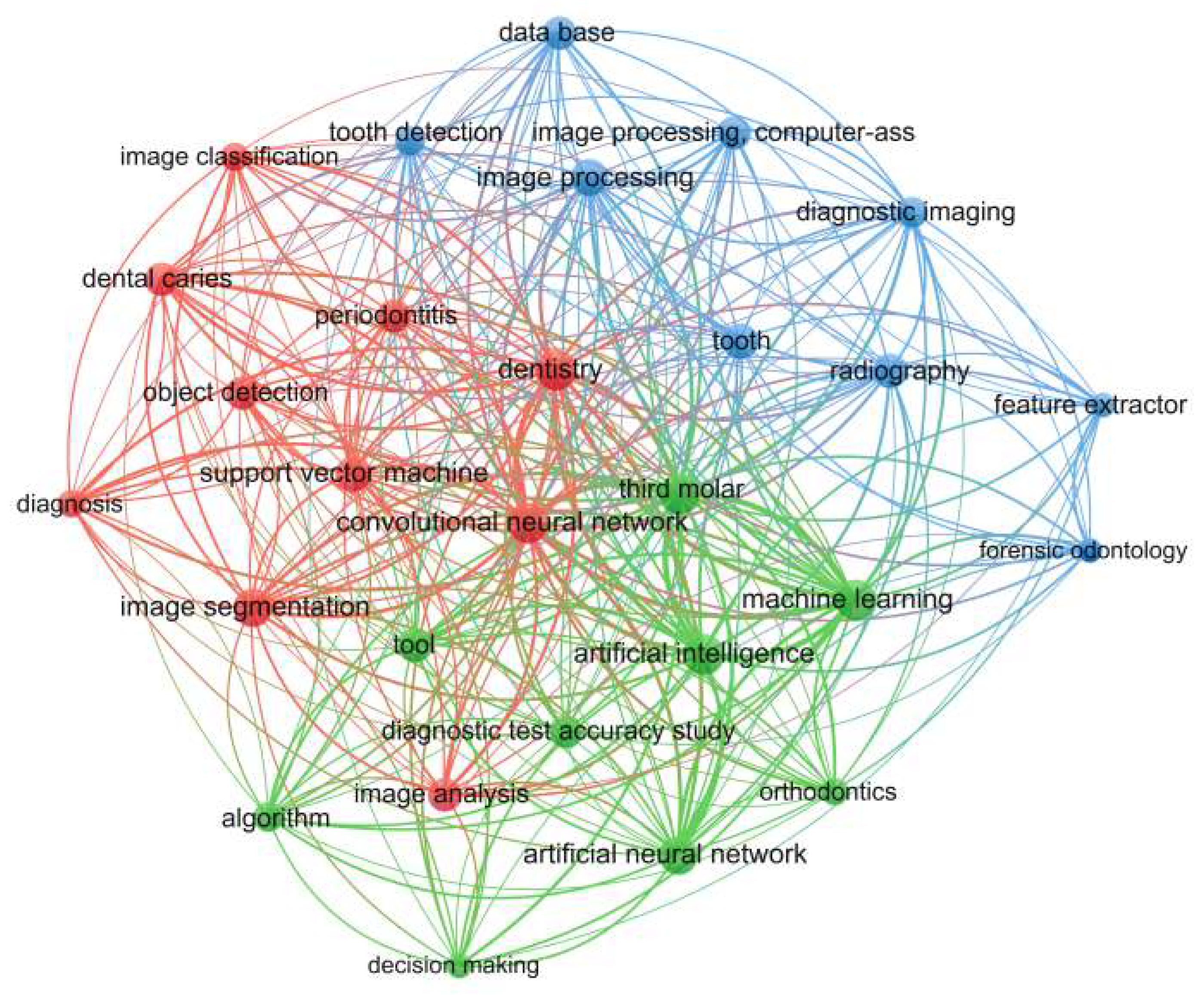
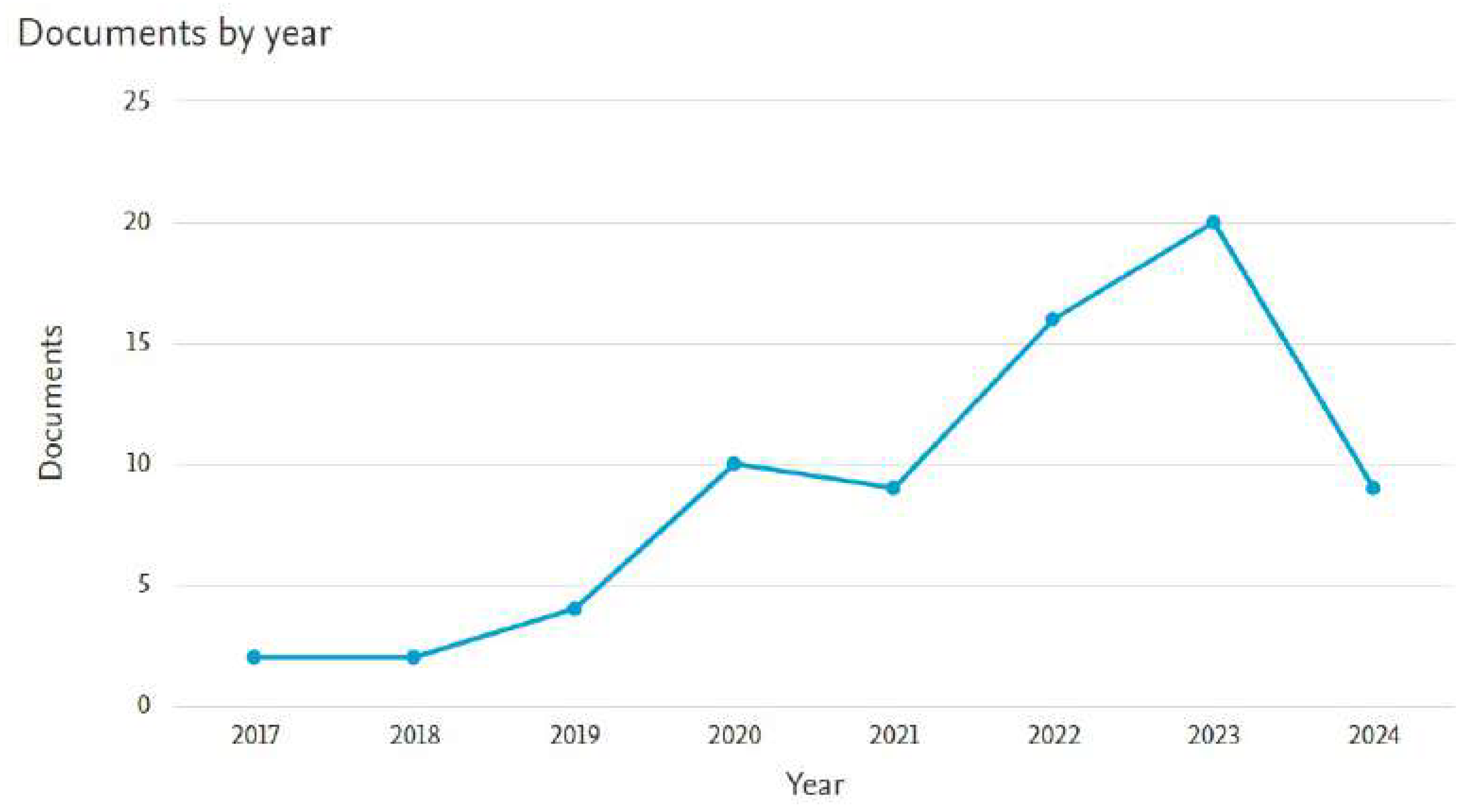
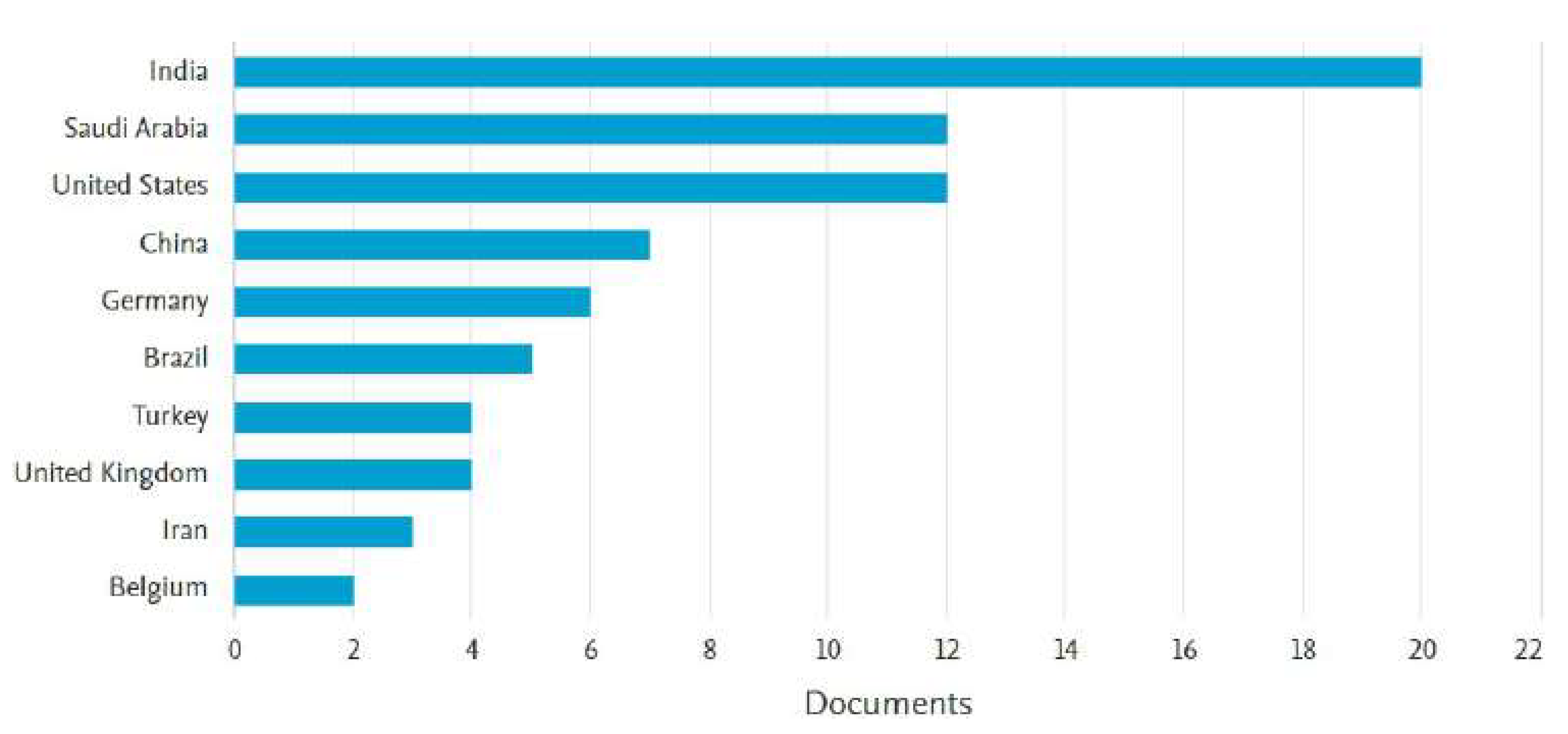
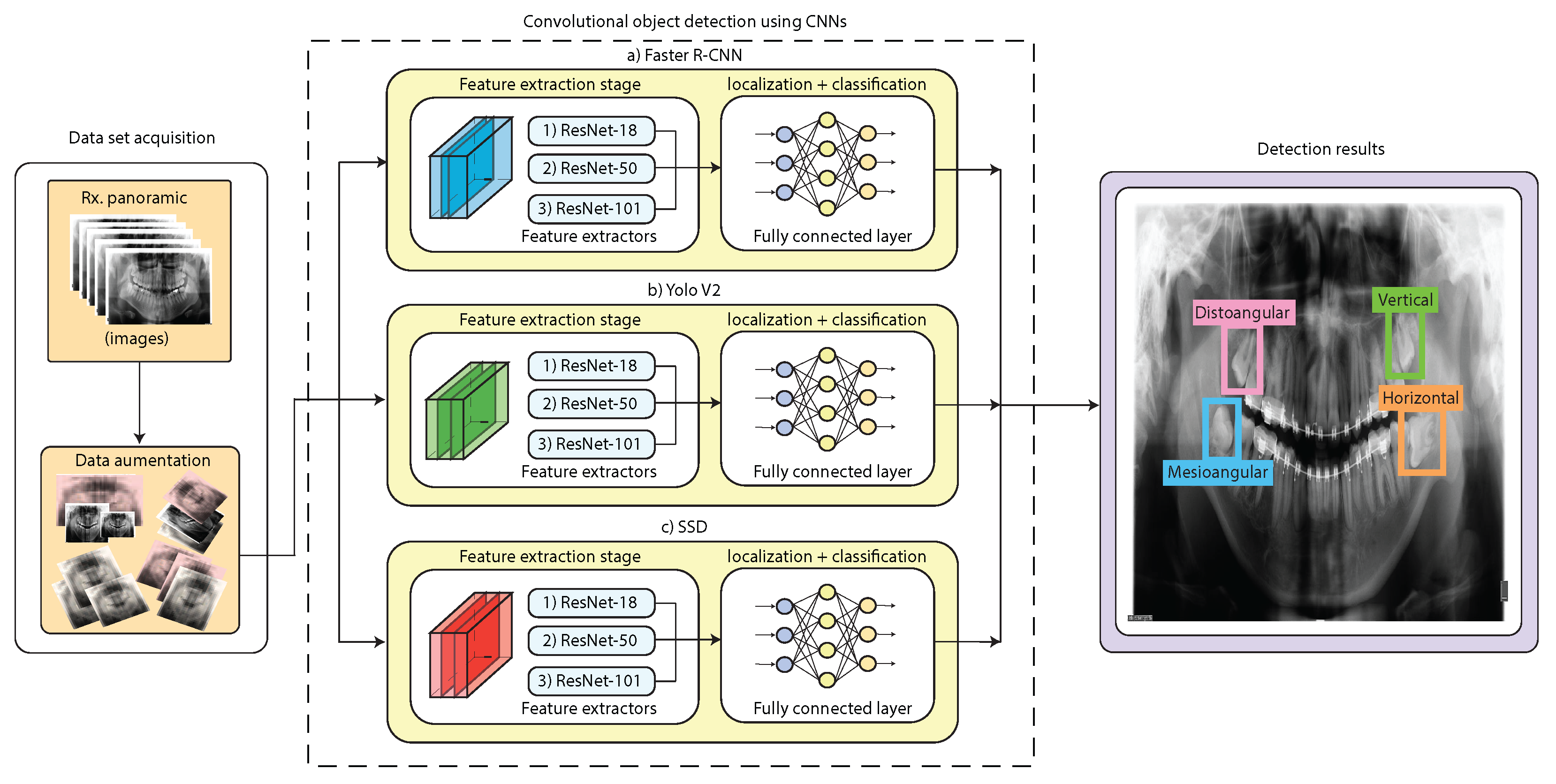
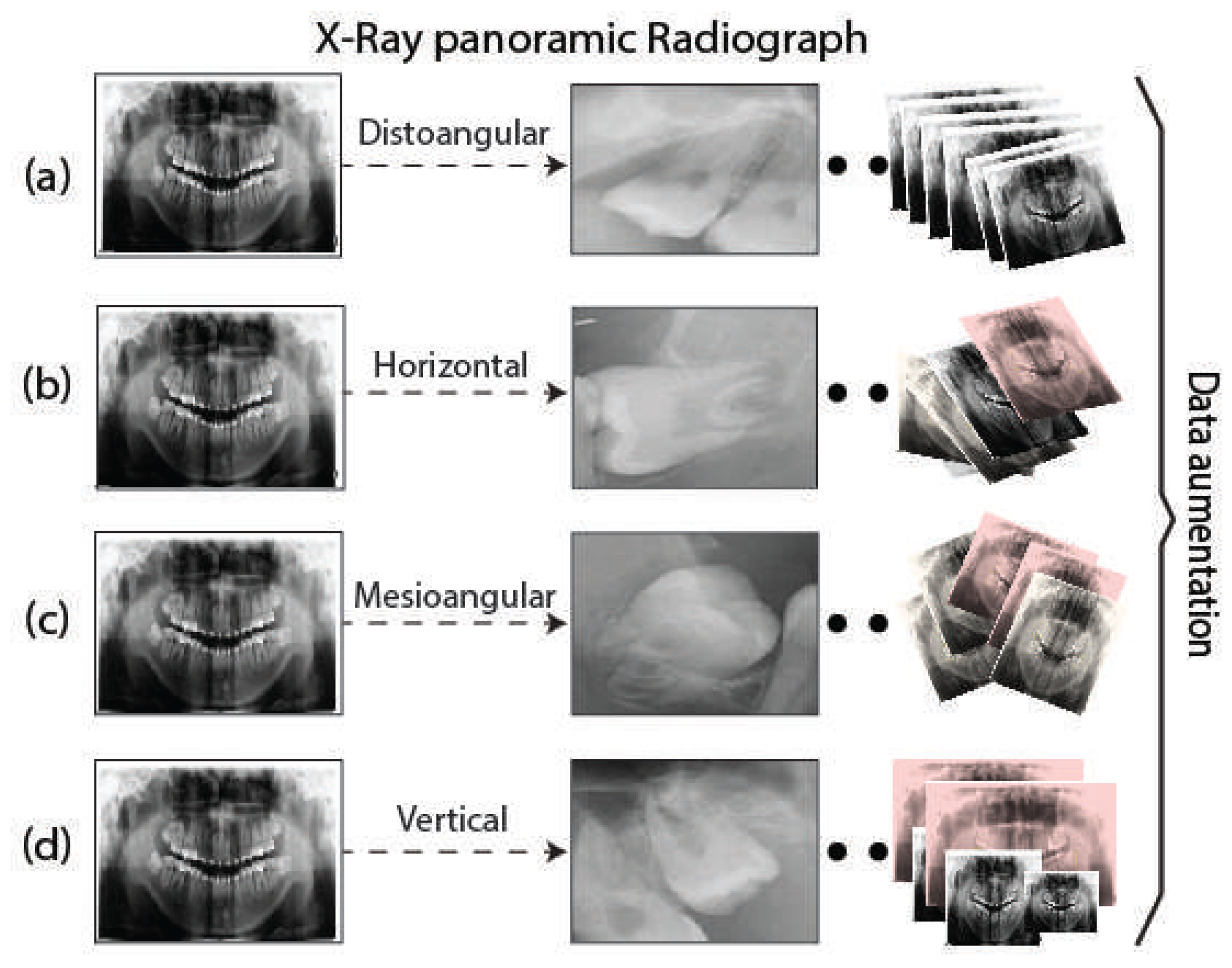
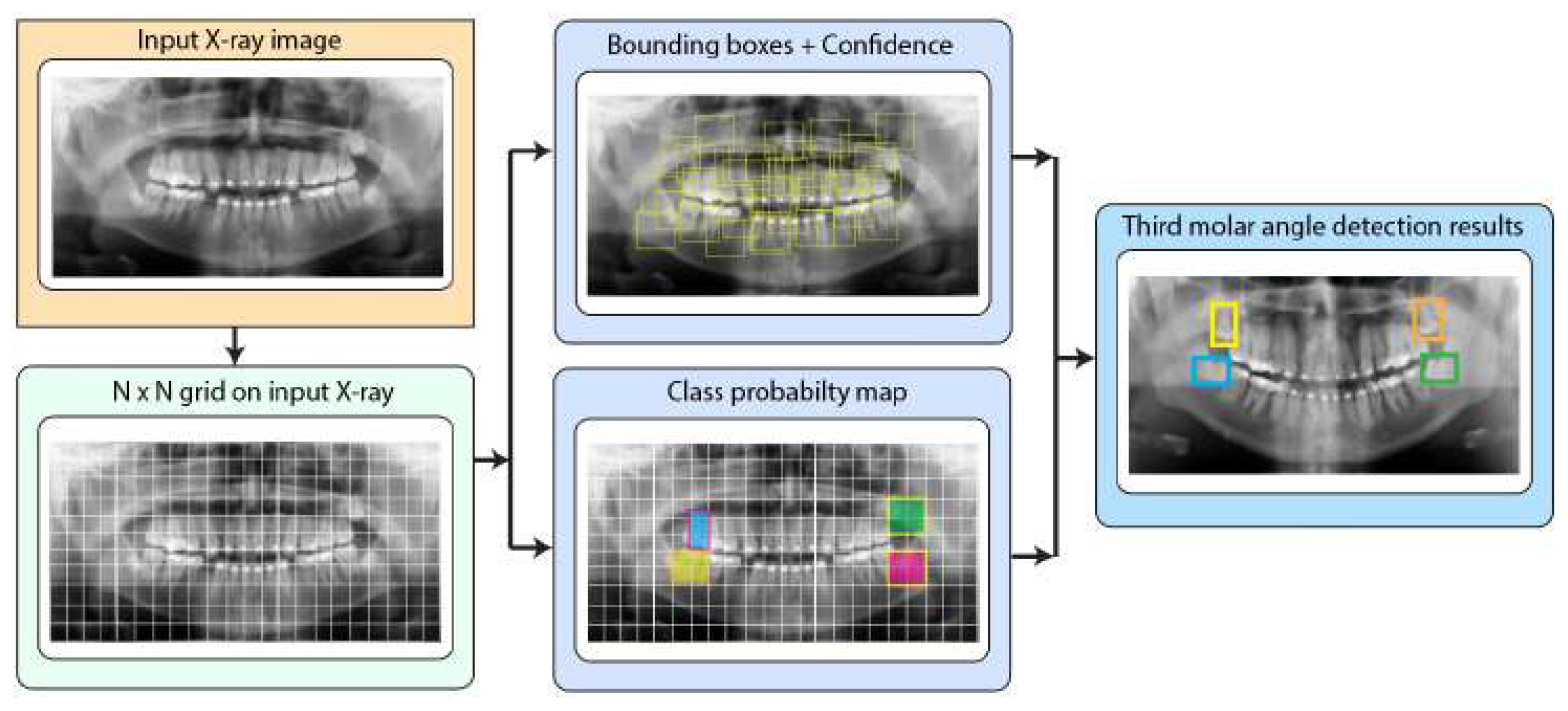
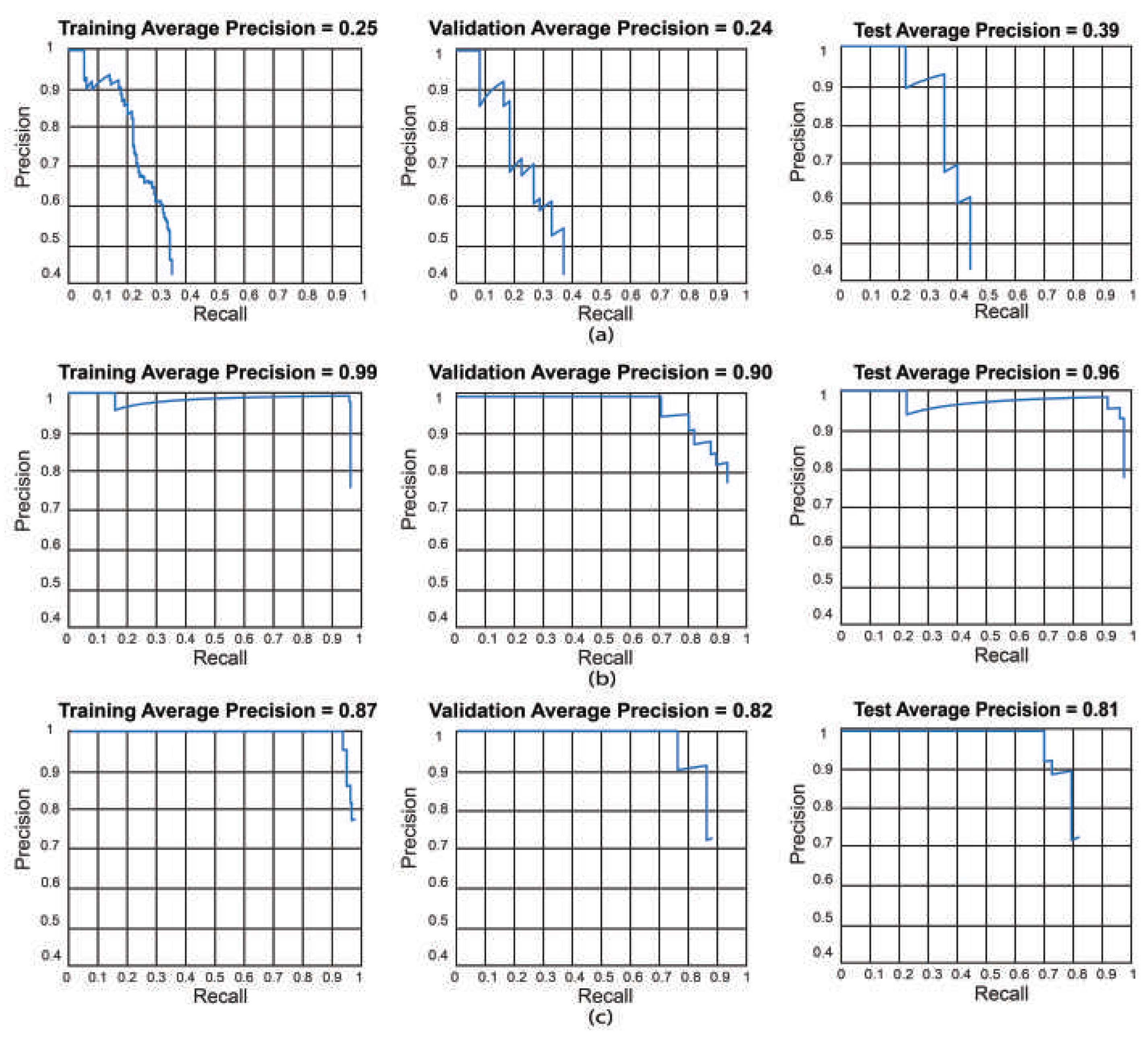
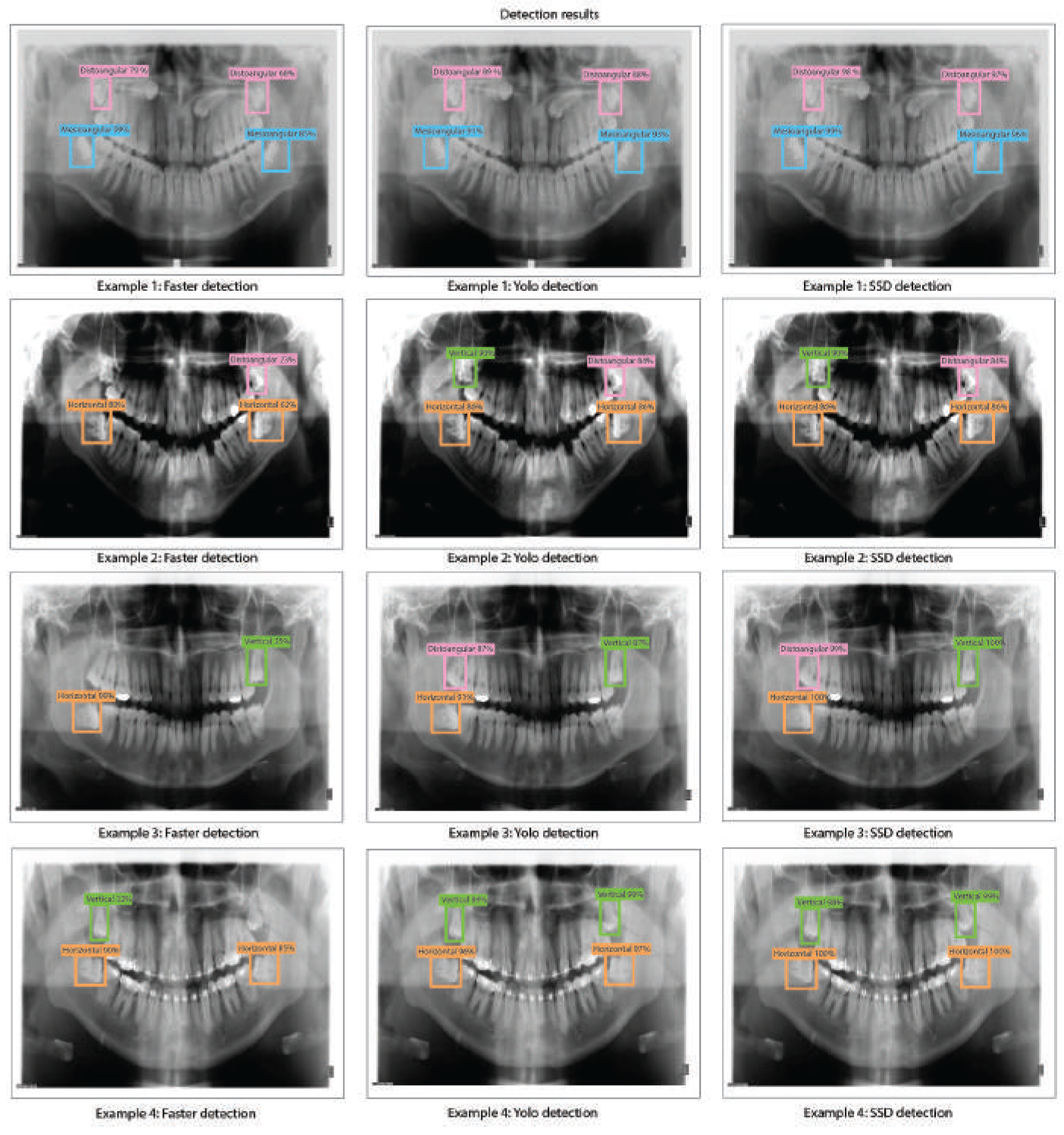
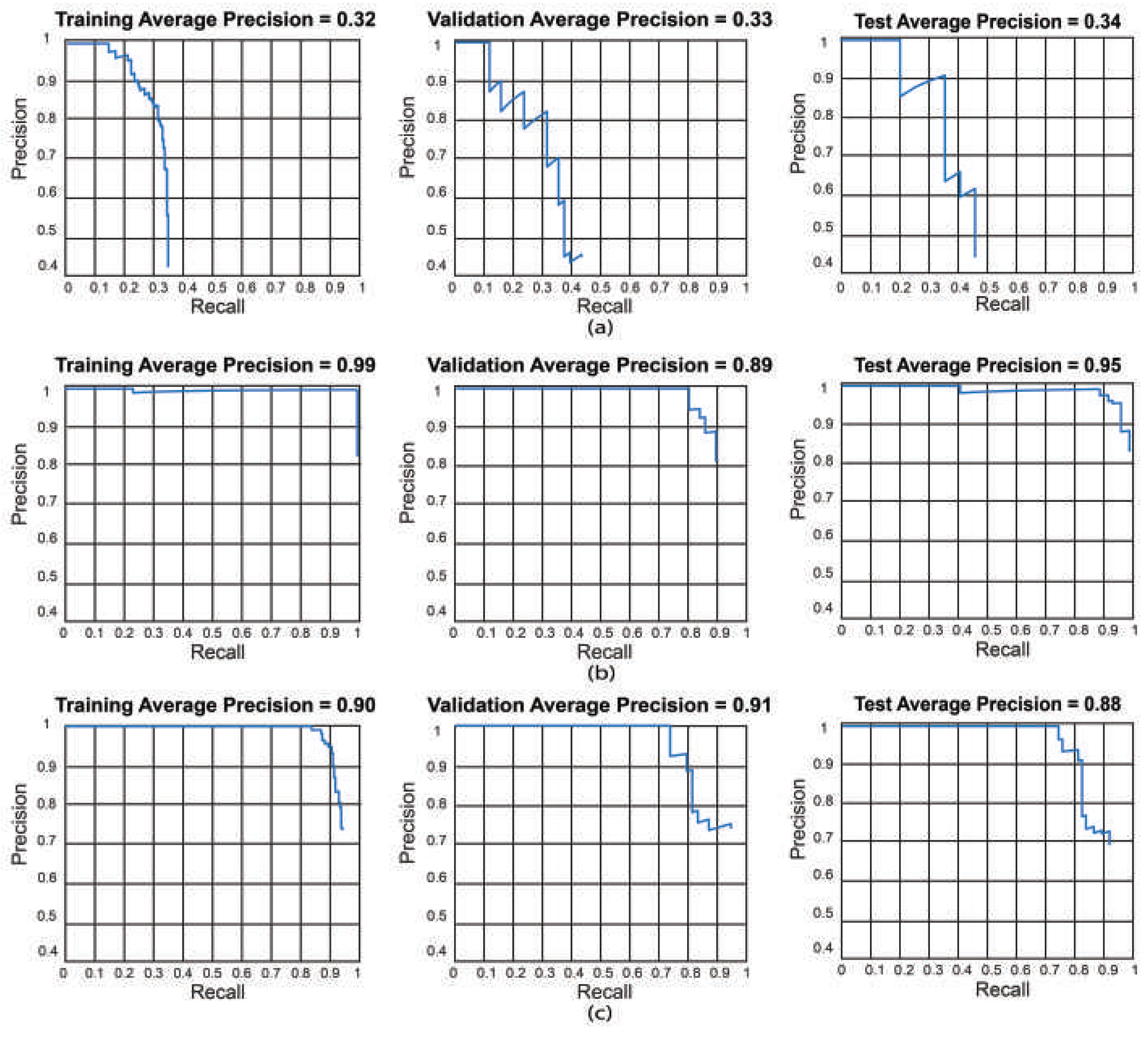
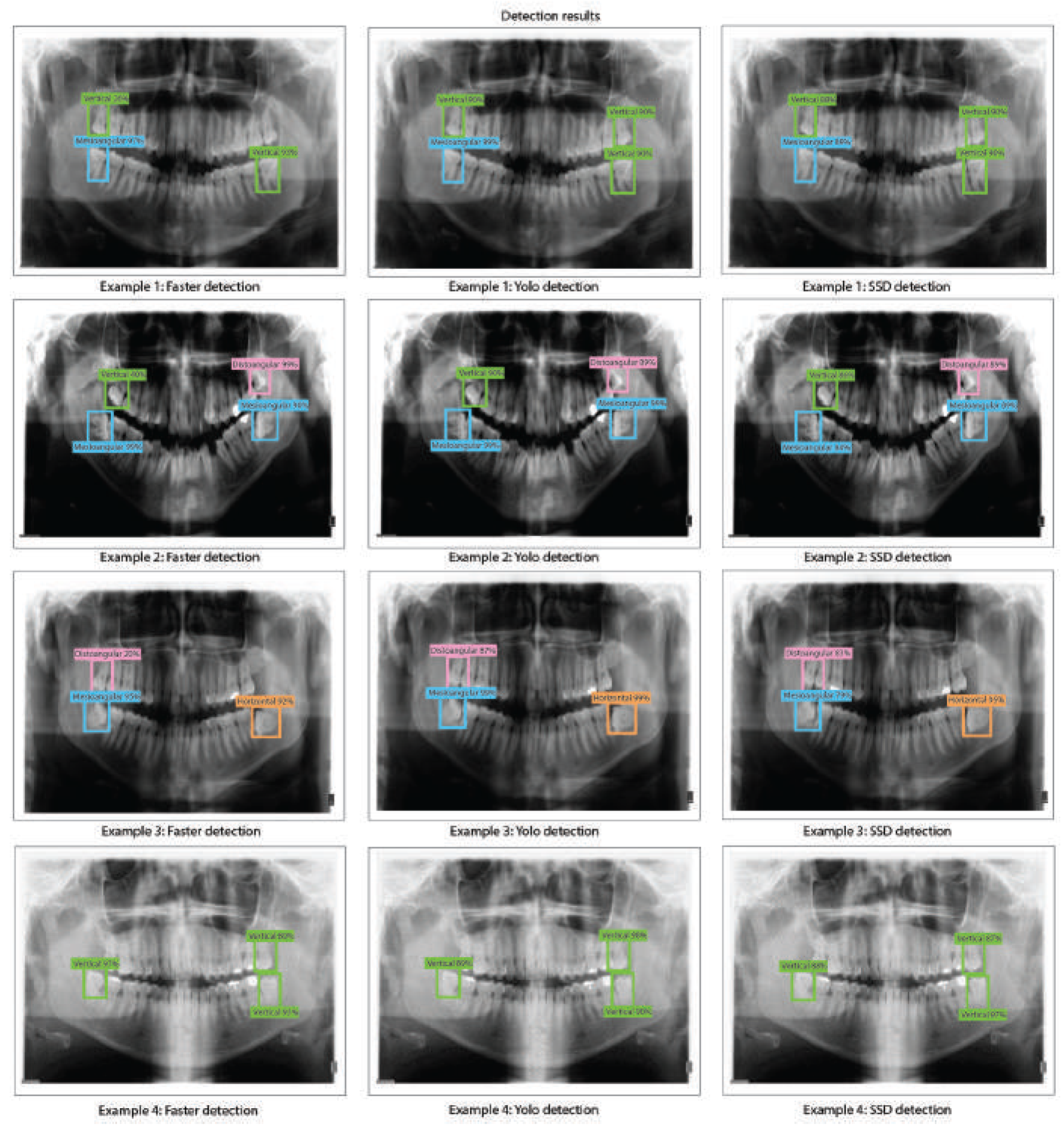
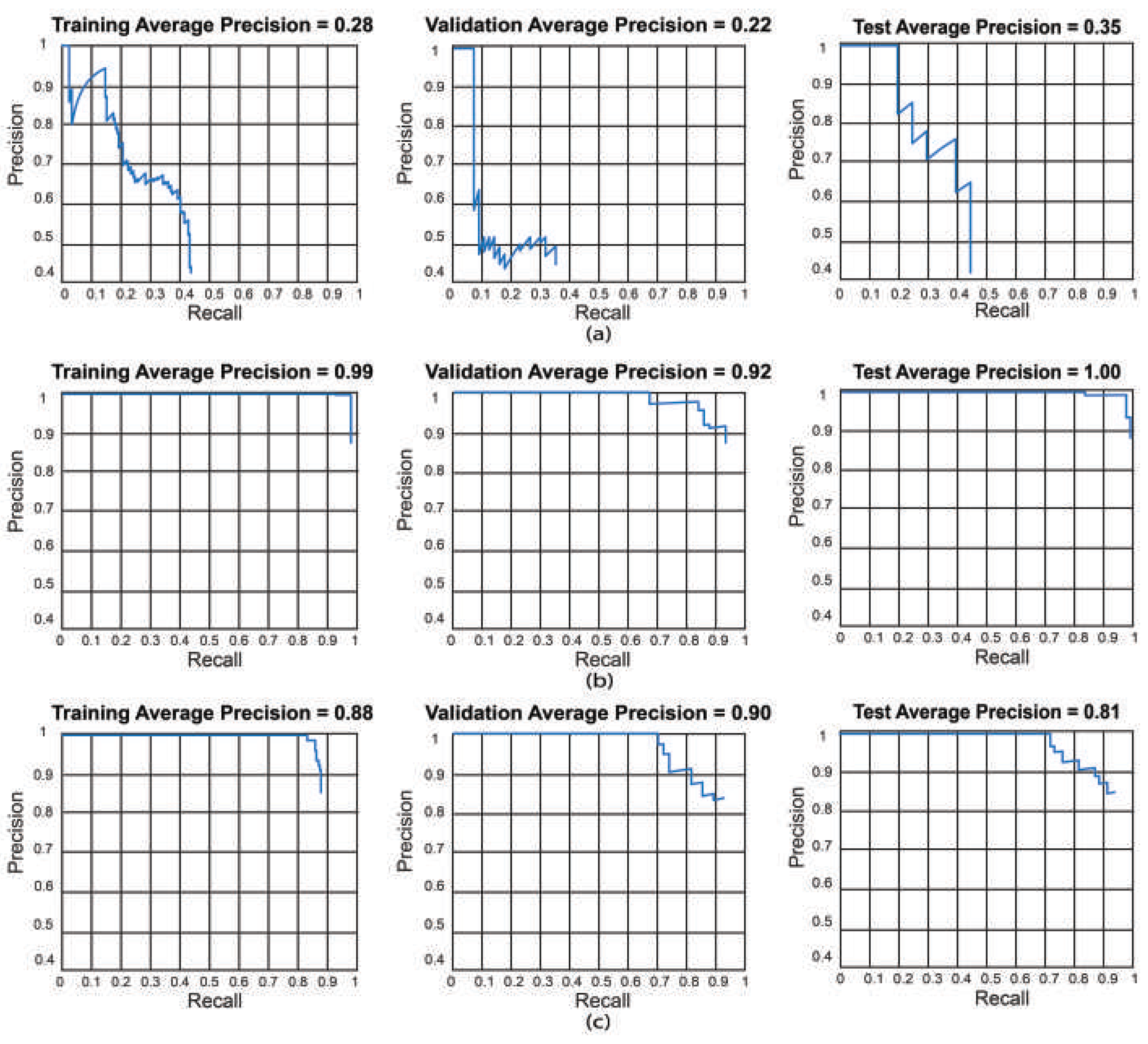
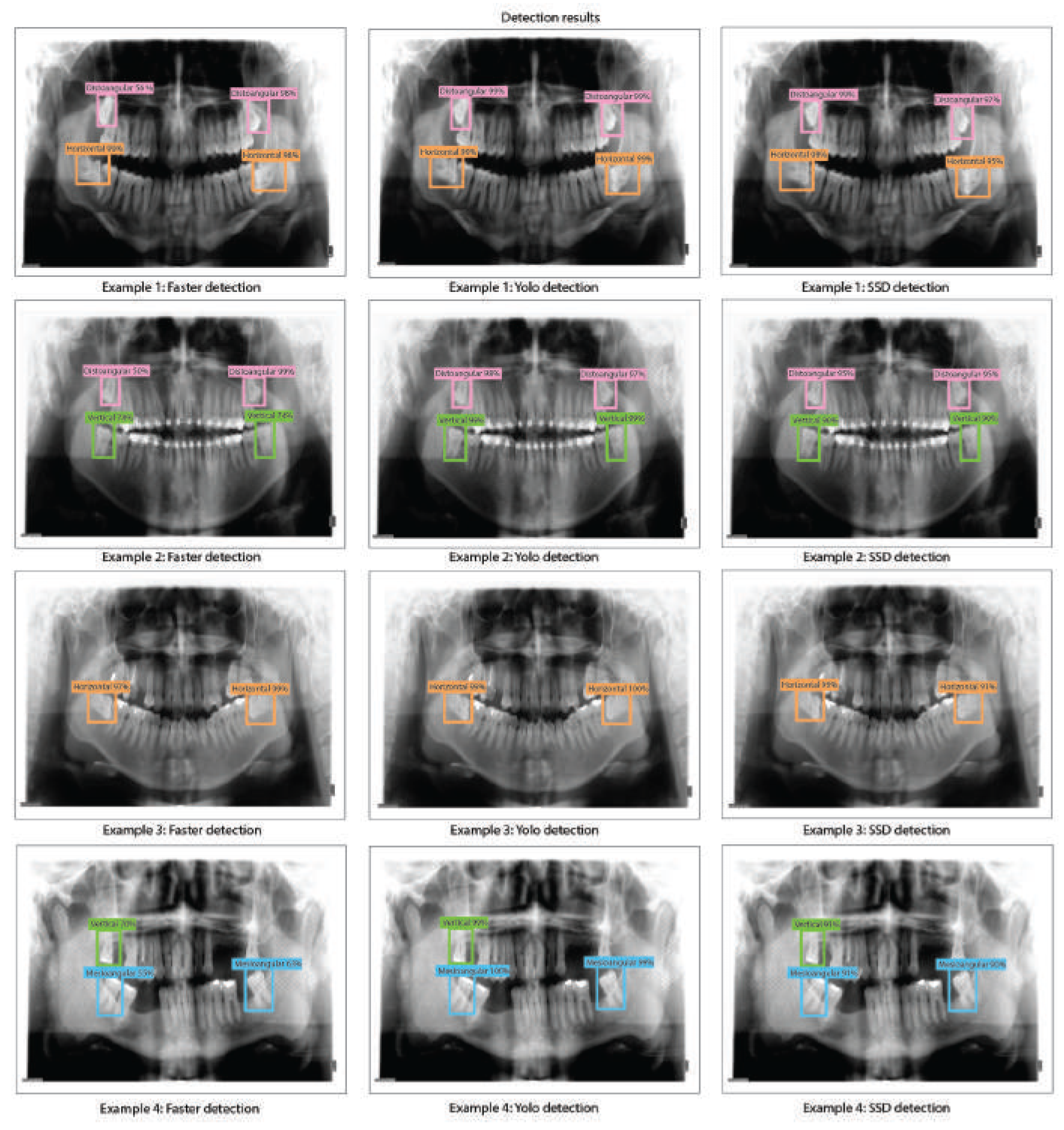
| Data | |||
| Database | Training | Validation | Testing |
| Normal | 258 | 34 | 33 |
| Data augmentation |
516 | 65 | 66 |
| Hyper-parameter configuration | |||
| Test | Max Epochs | Learning Rate | Optimizer |
| Test 1 | 20 | 0.001 | adam |
| Test 2 | 20 | 0.001 | sgdm |
| Test 3 | 20 | 0.001 | rmsprop |
| Test 4 | 20 | 0.005 | adam |
| Test 5 | 20 | 0.005 | sgdm |
| Test 6 | 20 | 0.005 | rmsprop |
| Test 7 | 20 | 0.0001 | adam |
| Test 8 | 20 | 0.0001 | sgdm |
| Test 9 | 20 | 0.0001 | rmsprop |
| Test 10 | 20 | 0.001 | adam |
| Test 11 | 40 | 0.001 | sgdm |
| Test 12 | 40 | 0.001 | rmsprop |
| Test 13 | 40 | 0.005 | adam |
| Test 14 | 40 | 0.005 | sgdm |
| Test 15 | 40 | 0.005 | rmsprop |
| Test 16 | 40 | 0.0001 | adam |
| Test 17 | 40 | 0.0001 | sgdm |
| Test 18 | 40 | 0.0001 | rmsprop |
| Training | Validation | Testing | |||||||
| Test | Faster R- CNN |
Yolo V2 |
SSD | Faster R- CNN |
Yolo V2 |
SSD | Faster R- CNN |
Yolo V2 |
SSD |
| Test 1 | 2.3% | 99% | 83% | 1.2% | 85% | 77% | 2% | 96% | 75% |
| Test 2 | 25% | 87% | 60% | 24% | 61% | 53% | 39% | 81% | 51% |
| Test 3 | 1.3% | 97% | 84% | 1% | 84% | 81% | 1.3% | 86% | 77% |
| Test 4 | 3.2% | 94% | 84% | 2% | 71% | 70% | 3% | 86% | 69% |
| Test 5 | 5% | 99% | 86% | 12% | 85% | 74% | 14% | 87% | 72% |
| Test 6 | 8.4% | 81% | 3% | 8.3% | 63% | 2.7% | 7.1% | 77% | 2% |
| Test 7 | 6% | 85% | 88% | 6% | 72% | 73% | 5.2% | 81% | 71% |
| Test 8 | 3% | 42% | 1.4% | 3% | 38% | 1.2% | 2% | 36% | 1.3% |
| Test 9 | 4.6% | 81% | 88% | 4.6% | 70% | 77% | 3.6% | 69% | 74% |
| Test 10 | 9.3% | 99% | 88% | 8.3% | 90% | 79% | 8.3% | 96% | 77% |
| Test 11 | 16% | 99% | 89% | 17% | 82% | 76% | 12% | 93% | 75% |
| Test 12 | 6.2% | 99% | 87% | 6% | 84% | 82% | 4% | 91% | 81% |
| Test 13 | 6.3% | 99% | 88% | 3% | 92% | 79% | 8.9% | 89% | 78% |
| Test 14 | 11% | 99% | 88% | 8% | 88% | 76% | 19% | 97% | 77% |
| Test 15 | 2.2% | 96% | 87% | 2% | 84% | 77% | 1.5% | 87% | 78% |
| Test 16 | 18% | 99% | 89% | 18% | 85% | 80% | 28% | 95% | 79% |
| Test 17 | 14% | 52% | 6% | 11% | 50% | 11% | 21% | 51% | 8% |
| Test 18 | 8.2% | 99% | 88% | 8.6% | 79% | 76% | 8.6% | 86% | 76% |
| Training | Validation | Testing | |||||||
| Test | Faster R- CNN |
Yolo V2 |
SSD | Faster R- CNN |
Yolo V2 |
SSD | Faster R- CNN |
Yolo V2 |
SSD |
| Test 1 | 6% | 99% | 88% | 7% | 85% | 79% | 19% | 93% | 77% |
| Test 2 | 18% | 96% | 91% | 22% | 87% | 82% | 24% | 76% | 82% |
| Test 3 | 3.3% | 97% | 86% | 2.9% | 81% | 79% | 3.1% | 88% | 78% |
| Test 4 | 8.2% | 85% | 84% | 2% | 72% | 80% | 7.2% | 80% | 72% |
| Test 5 | 17% | 98% | 1.3% | 13% | 89% | 1.3% | 17% | 91% | 1.2% |
| Test 6 | 1.2% | 1.8% | 1.5% | 1.2% | 1.5% | 1.3% | 1.1% | 1.5% | 1.4% |
| Test 7 | 16% | 99% | 87% | 13% | 89% | 85% | 14% | 91% | 85% |
| Test 8 | 8% | 9% | 65% | 10% | 8% | 64% | 13% | 15% | 63% |
| Test 9 | 7.6% | 99% | 88% | 6.6% | 91% | 91% | 7.1% | 92% | 88% |
| Test 10 | 14% | 94% | 88% | 9% | 82% | 78% | 21% | 98% | 78% |
| Test 11 | 35% | 99% | 89% | 33% | 90% | 81% | 34% | 83% | 79% |
| Test 12 | 3% | 99% | 86% | 2.9% | 88% | 76% | 2.9% | 90% | 79% |
| Test 13 | 8.2% | 98% | 87% | 7.2% | 78% | 83% | 8% | 94% | 82% |
| Test 14 | 30% | 99% | 2.1% | 22% | 84% | 1.1% | 18% | 89% | 1.2% |
| Test 15 | 4.2% | 3% | 2% | 4% | 2.6% | 2.2% | 4.2% | 2.3% | 2.5% |
| Test 16 | 12% | 99% | 89% | 14% | 90% | 84% | 17% | 88% | 84% |
| Test 17 | 23% | 30% | 82% | 22% | 20% | 71% | 20% | 18% | 70% |
| Test 18 | 8% | 99% | 88% | 7.2% | 89% | 84% | 6.9% | 95% | 83% |
| Training | Validation | Testing | |||||||
| Test | Faster R- CNN |
Yolo V2 |
SSD | Faster R- CNN |
Yolo V2 |
SSD | Faster R- CNN |
Yolo V2 |
SSD |
| Test 1 | 2.8% | 99% | 88% | 1.5% | 90% | 87% | 2.1% | 97% | 87% |
| Test 2 | 20% | 98% | 86% | 10% | 81% | 75% | 24% | 89% | 72% |
| Test 3 | 1.8% | 96% | 87% | 1.2% | 79% | 84% | 1.1% | 89% | 84% |
| Test 4 | 7.2% | 93% | 64% | 4.2% | 84% | 53% | 3.1% | 92% | 52% |
| Test 5 | 28% | 99% | 3.2% | 22% | 86% | 2.8% | 35% | 86% | 3% |
| Test 6 | 1.6% | 7% | 3.3% | 1.3% | 12% | 7.7% | 1.1% | 5% | 2% |
| Test 7 | 20% | 99% | 88% | 19% | 92% | 86% | 27% | 95% | 84% |
| Test 8 | 12% | 15% | 66% | 7% | 11% | 66% | 25% | 12% | 62% |
| Test 9 | 3% | 99% | 89% | 1.1% | 93% | 87% | 2% | 93% | 82% |
| Test 10 | 9% | 99% | 85% | 6% | 87% | 81% | 1% | 98% | 81% |
| Test 11 | 21% | 99% | 88% | 12% | 92% | 78% | 14% | 99% | 77% |
| Test 12 | 5.5% | 99% | 88% | 4% | 83% | 90% | 3% | 97% | 89% |
| Test 13 | 3.3% | 98% | 88% | 3% | 80% | 83% | 2.8% | 92% | 77% |
| Test 14 | 23% | 99% | 5.2% | 19% | 85% | 4.2% | 26% | 89% | 4.1% |
| Test 15 | 6% | 14% | 2.9% | 3% | 9% | 2% | 6.5% | 10% | 2% |
| Test 16 | 18% | 99% | 88% | 9% | 91% | 84% | 31% | 95% | 81% |
| Test 17 | 16% | 38% | 82% | 18% | 20% | 76% | 33% | 21% | 74% |
| Test 18 | 2.7% | 99% | 88% | 2.4% | 92% | 87% | 2.1% | 95% | 83% |
| Detection Model | ResNet-18 (s) | ResNet-50 (s) | ResNet-101 (s) |
| Faster R-CNN | 0.223 | 0.188 | 0.360 |
| YOLO V2 | 0.071 | 0.089 | 0.092 |
| SSD | 0.077 | 0.104 | 0.093 |
Disclaimer/Publisher’s Note: The statements, opinions and data contained in all publications are solely those of the individual author(s) and contributor(s) and not of MDPI and/or the editor(s). MDPI and/or the editor(s) disclaim responsibility for any injury to people or property resulting from any ideas, methods, instructions or products referred to in the content. |
© 2024 by the authors. Licensee MDPI, Basel, Switzerland. This article is an open access article distributed under the terms and conditions of the Creative Commons Attribution (CC BY) license (http://creativecommons.org/licenses/by/4.0/).





